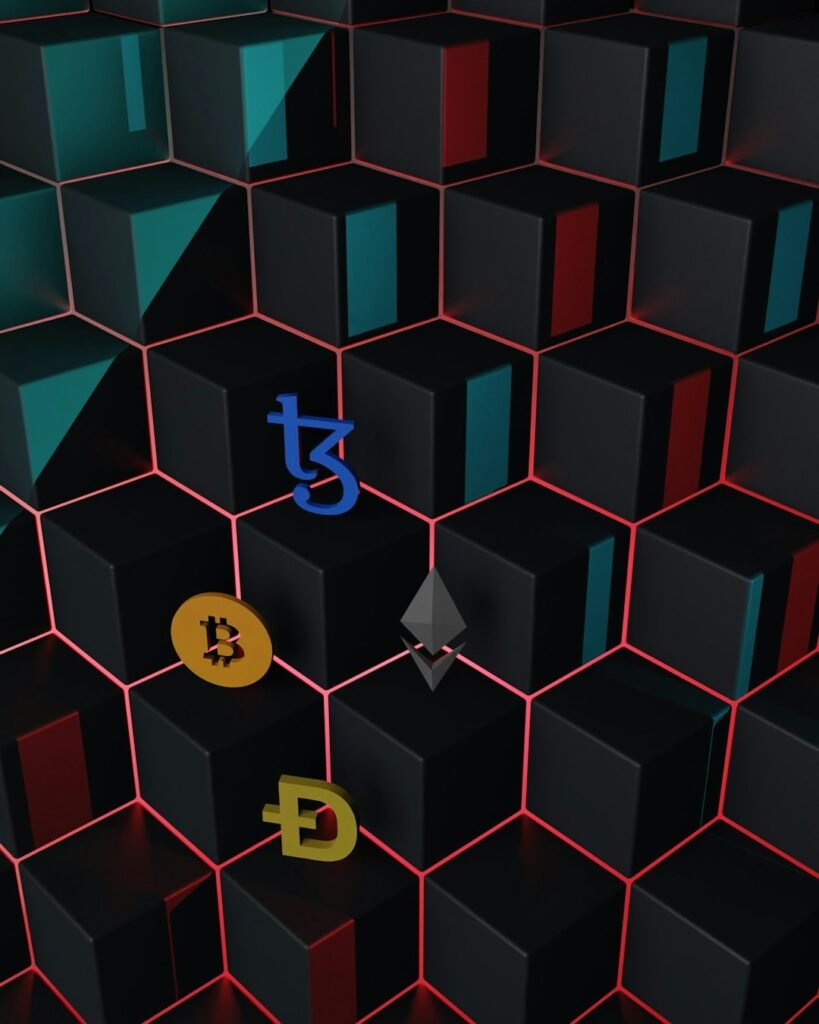تعظيم دخلك السلبي: الدليل الشامل للمراهنة على العملات الرقمية
أصبح الاحتفاظ بالعُملات الرقمية استراتيجية أساسية للمستثمرين الباحثين عن دخل سلبي في مجال الأصول الرقمية. ولكن الإبحار في عدد لا يحصى من الخيارات لا يتطلب فهم المكافآت الرئيسية فحسب، بل يتطلب أيضًا فهم حقيقي العوائد بعد احتساب التضخم. لقد قام خبراؤنا بتحليل السوق بدقة متناهية ليقدموا لك هذا الدليل النهائي لأفضل عملات ومنصات الرهان، مع التركيز على المشروعات ذات السمعة الطيبة التي تقدم عوائد حقيقية إيجابية مستدامة.
سبب أهمية معدل المكافأة الحقيقي
تُغري العديد من أدلة الرهان المستثمرين بعائدات النسبة المئوية السنوية الاسمية العالية (APYs)، وغالبًا ما تكون من مشاريع غامضة ذات تضخم رمزي مفرط. يؤدي هذا التضخم إلى تآكل القيمة الفعلية لمكافآتك بشكل كبير. تُعطي منهجيتنا الأولوية لما يلي معدلات المكافأة الحقيقية - الين الياباني مطروحًا منه معدل تضخم العملة الرمزية. وهذا يُعطي صورة حقيقية للقوة الشرائية التي تحصل عليها. لقد اخترنا المشاريع بناءً على السمعة والجدارة بالثقة وأمان الشبكة، والأهم من ذلك، العوائد الحقيقية الإيجابية للمستثمرين.
أفضل 10 عملات رقمية للمراهنة (مرتبة حسب معدل العائد الحقيقي)
فيما يلي العملات الرقمية الرائدة في مجال الرهان، والتي تم تقييمها بدقة وترتيبها حسب معدل المكافأة الحقيقية في وقت كتابة هذا التقرير:
-
BNB (معدل المكافأة الحقيقي: 7.43%)
- BNB هو الرمز المميز الأصلي لنظام Binance البيئي. يؤدي الاحتفاظ بعملة BNB إلى فتح مزايا مثل تخفيض رسوم التداول.
- إن قبو BNB على Binance تجميع المكافآت من مصادر متعددة، مما يسهل العملية.
- ملاحظة المستثمر: ابق على اطلاع على التطورات التنظيمية المحيطة بـ Binance، حيث يمكن أن تؤثر هذه التطورات على سعر BNB.
-
كوزموس (ATOM) (معدل المكافأة الحقيقي: 6.95%)
- تهدف Cosmos إلى إنشاء "إنترنت سلاسل الكتل". ويساعد وضع ATOM في تأمين هذه الشبكة المترابطة.
- راهن مباشرة باستخدام محافظ لا مركزية مثل Keplr عبر دليل رهان كوزموس الرسمي.
-
بولكادوت (DOT) (معدل المكافأة الحقيقي: 6.11%)
- تسهّل Polkadot التواصل عبر السلسلة. يؤمن Staking DOT الشبكة ويكسب المكافآت.
- يمكن للمستخدمين المتقدمين المشاركة عبر بولكادوت.js (10 DOT على الأقل). يتوفر وصول أسهل من خلال تجمعات الترشيح على لوحة معلومات رهان بولكادوت (الحد الأدنى 1 DOT).
-
CRO (معدل المكافأة الحقيقي: 5.24%)
- CRO هو الرمز المميز الأصلي ل Crypto.com، حيث يقدم مكافآت الرهان ومزايا محسّنة لمستخدمي بطاقة فيزا Crypto.com.
- ضع الحصة بشكل ملائم على منصة الكسب من Crypto.com.
-
ألجوراند (ALGO) (معدل المكافأة الحقيقي: 4.5%)
- تستخدم Algorand إثبات الحصة النقي (PPoS). مجرد الاحتفاظ ب ALGO في محفظة مثل MyAlgo يكسب المكافآت الأساسية.
- يمكن تحقيق مكافآت أعلى بكثير من خلال المشاركة في الحوكمة عن طريق منصة ألغوراند للحوكمة.
-
الإيثيريوم (ETH) (معدل المكافأة الحقيقي: 4.11%)
-
المضلع (MATIC) (معدل المكافأة الحقيقي: 2.58%)
- Polygon هو حل رائد لتوسيع نطاق الطبقة الثانية من الإيثيريوم. يساعد Staking MATIC على تأمين الشبكة.
- حصة مباشرة من خلال منصة رهان المضلع باستخدام MetaMask.
-
الانهيار الجليدي (AVAX) (معدل المكافأة الحقيقي: 2.47%)
- Avalanche هي منصة عقود ذكية عالية الإنتاجية. يتم الرهان بالمليارات في AVAX لتأمين شبكتها.
- شارك AVAX عبر الموقع الرسمي محفظة الانهيار الجليدي (الحد الأدنى 25 AVAX).
-
Tezos (XTZ) (معدل المكافأة الحقيقي: 1.58%)
- Tezos هي سلسلة بلوكشين ذاتية التعديل. على الرغم من ارتفاع التضخم، لا يزال رهان XTZ يُحقق عوائد حقيقية إيجابية.
- شارك باستخدام محافظ سهلة الاستخدام مثل المحفظة الذرية أو غواردا.
-
كاردانو (ADA) (معدل المكافأة الحقيقي: 0.55%)
- كاردانو هي منصة عقود ذكية رئيسية. في حين أن معدل المكافأة الحقيقية أقل في الوقت الحالي، إلا أن الرهان لا يزال مصدر دخل سلبي قابل للتطبيق لحاملي ADA.
- راهن ADA باستخدام محافظ مثل Daedalus أو Yoroi.
فهم آلية الرهان: الآلية الأساسية
إثبات الحصة (PoS) هي آلية الإجماع التي تقوم عليها عملية الرهان. وهي تستبدل التعدين كثيف الطاقة المستخدم في إثبات العمل (مثل البيتكوين) بنموذج أكثر كفاءة:
- رهان العملات المشفرة: يقوم المستخدمون بحجز (حصة) التوكنات الخاصة بهم.
- التحقق من صحة المعاملات: تقوم الشبكة باختيار المدققين، وغالبًا ما يكون ذلك بناءً على حجم حصتهم وعوامل أخرى، لاقتراح كتل جديدة والتصديق عليها.
- اكسب مكافآت: يكسب المدققون مكافآت مقابل إضافة الكتل بنجاح والحفاظ على أمان الشبكة. يشارك المدققون (المستخدمون الذين يشاركون المدقق) في هذه المكافآت.
الاختلافات في آليات الرهان:
- إثبات الحصة المفوض (DPoS): يصوت حاملو الرموز الرمزية للمندوبين للتحقق من صحة المندوبين نيابةً عنهم، مما يحسن الكفاءة (على سبيل المثال، كوزموس).
- الرهان السائل: يتلقى المستخدمون رمزًا مميزًا سائلًا يمثل أصولهم المرهونة (على سبيل المثال، stETH للإيثيريوم)، مما يتيح الاستخدام في DeFi مع الاستمرار في كسب مكافآت الرهان.
الرهان المركزي مقابل الرهان اللامركزي:
- الحجز المركزي (CeFi): التي تقدمها البورصات (مثل Binance وCoinbase). فهم يديرون الجوانب التقنية، مما يجعلها سهلة الاستخدام، ولكنك تحتفظ بأصولك لديهم، ويأخذون رسوم العمولة.
- الحجز اللامركزي (DeFi): يتضمن الرهان مباشرة على السلسلة أو عبر البروتوكولات/المحافظ اللامركزية (على سبيل المثال، Keplr ل ATOM، و Polkadot.js ل DOT). أنت تحتفظ بالوصاية ومن المحتمل أن تحتفظ بمزيد من المكافآت ولكنك تتطلب المزيد من المعرفة التقنية.
زراعة الغلة مقابل زراعة الغلة
- الرهان: تتضمن قفل الرموز المميزة لدعم أمان سلسلة بلوكشين PoS وعملياتها. تتناسب المكافآت بشكل عام مع المبلغ المُخزَّن وغالباً ما تكون أكثر استقراراً.
- زراعة الغلة: ينطوي على توفير السيولة لبروتوكولات DeFi (على سبيل المثال، الإقراض، ومجمعات السيولة) مقابل مكافآت، عادةً ما تكون في شكل رموز إضافية. يمكن أن يوفر هذا عوائد محتملة أعلى ولكنه ينطوي على مخاطر أعلى بكثير مثل الخسارة غير الدائمة وفشل البروتوكول.
الموازنة بين إيجابيات وسلبيات الرهان على الأسهم
الإيجابيات:
- الدخل السلبي: احصل على المكافآت ببساطة عن طريق الاحتفاظ بأصولك الرقمية والمراهنة بها.
- المشاركة في الشبكة: المساهمة في أمن ولامركزية شبكات البلوك تشين.
- إمكانية المضاعفة: عزز المكافآت لزيادة مبلغ الرهان وكسب المزيد بمرور الوقت.
- حاجز أقل من التعدين: يتطلب خبرة فنية واستثمارًا أقل في الأجهزة مقارنةً بالتعدين.
السلبيات:
- خفض المخاطر: يمكن معاقبة المدقّقين (وأحيانًا مندوبيهم) بسبب السلوك الخبيث أو التعطّل، مما يؤدي إلى خسارة الأموال المرهونة.
- فترات الإغلاق وأوقات فك الارتباط: وغالبًا ما تكون الأصول مقفلة لفترة محددة أو تتطلب فترة طويلة لفك الرهن (أيام/أسابيع) قبل أن يمكن سحبها أو تداولها.
- مخاطر السوق: يمكن أن تتقلب قيمة العملة الرقمية المُرهونة بشكل كبير، مما قد يفوق قيمة المكافآت المكتسبة.
- مخاطر التضخم: يمكن أن يؤدي التضخم الكبير في الرموز إلى خفض قيمة مكافآت الرهان التي تحصل عليها.
- مخاطر المنصة/مخاطر الحراسة (CeFi): ينطوي استخدام المنصات المركزية على مخاطر الطرف المقابل - فقد تتعرض البورصة للاختراق أو تصبح معسرة.
لماذا يمكن أن تكون ال APYs المرتفعة خادعة: مثال سولانا
يعد Solana (SOL) خيارًا شائعًا للرهان غالبًا ما يعلن عن أرباح سنوية اسمية عالية (حوالي 7%). ومع ذلك، فإن معدل تضخمها المرتفع يؤدي إلى معدل المكافأة الحقيقية السالبة (-0.05%). وهذا يعني أنه بعد احتساب الرموز الجديدة التي تدخل التوكنات الجديدة التي يتم تداولها، تنخفض القيمة الفعلية للمكافآت. وهذا يسلط الضوء على الأهمية الحاسمة لتقييم حقيقي معدل المكافأة، وليس فقط العائد الرئيسي APY. كما اشتهرت مشاريع مثل مشروع تيرا/لونا المنهار بتقديم عوائد عالية غير مستدامة.
الآثار الضريبية المترتبة على الرهان
عادةً ما تكون مكافآت رهان العملات الرقمية هي خاضع للضريبة كدخل عادي بقيمتها السوقية العادلة في تاريخ استلامك لها. عندما تبيع هذه المكافآت أو تتخلص منها لاحقًا، ستتحمل ضريبة أرباح رأس المال بناءً على الفرق بين سعر البيع والقيمة عند استلامها (أساس التكلفة). تختلف اللوائح حسب الولاية القضائية، لذا من الضروري استشارة خبير ضرائب. للحصول على التفاصيل، راجع الموارد على ضرائب رهان العملات المشفرة.
اختيار منصة الرهان المناسبة: الاعتبارات الرئيسية
اختيار منصة آمنة وفعالة أمر بالغ الأهمية. إليك ما قام خبراؤنا بتقييمه عند المقارنة بين أفضل البورصات:
- متطلبات الرهان: الحد الأدنى للمبالغ والأهلية. توفر الحدود الدنيا إمكانية وصول أكبر.
- الرموز المتاحة: تنوع العملات المدعومة للرهان.
- النسبة المئوية السنوية للعائد السنوي (APY): معدل المكافأة المعلن عنه، ولكن مع التدقيق في الاستدامة والعائد الحقيقي.
- فترة الإغلاق: يتم تأمين الأصول ذات المدة الزمنية. توفر الخيارات الأقصر أو المرنة المزيد من السيولة.
- السيولة: إمكانية الدخول/الخروج من/إلى المواقع بسهولة.
- مخاطر القطع والتحقق من الصحة: يجب أن تخفف المنصات من مخاطر العقوبات من خلال مدققين موثوقين.
- رسوم الحجز: رسوم العمولة على المكافآت، ورسوم الاحتفاظ/عدم الاحتفاظ، ورسوم السحب. رسوم أقل تعني عوائد صافية أعلى.
- أمان المنصة: التخزين البارد، وإثبات الاحتياطيات، والمصادقة الثنائية، والامتثال التنظيمي، وصناديق التأمين (على سبيل المثال، $1B SAFU من Binance).
أفضل مقارنة بين أفضل منصات تداول العملات الرقمية:
-
الأفضل بشكل عام: Binance
- لماذا؟ أكبر بورصة، وأكثر من 100 عملة قابلة للمشاركة، وAPYs تنافسية، وبدون رسوم رهان، وأمان قوي (صندوق $1B SAFU)، وخيارات رهانات متنوعة (مرنة، ومغلقة، وDFi، وETH 2.0).
- العيب: توافر محدود في بعض المناطق (مثل الولايات المتحدة والمملكة المتحدة).
-
الأفضل في الولايات المتحدة كوين بيس
- لماذا؟ بورصة أمريكية منظمة بالكامل، وسهلة الاستخدام، ومدفوعات تلقائية، وأمان قوي مع تأمين FDIC على العملات الورقية.
- العيب: أصول رهان محدودة (~ 8)، عمولة عالية (351 تيرابايت 3 تيرابايت)، لا يوجد إثبات للاحتياطيات.
-
أقل رسوم على الرهانات BingX
- لماذا؟ رسوم تخزين/إلغاء تخزين صفرية، وشفافية APY، ومكافآت تنافسية (تصل إلى 22% على USDT، و500% على البدائل).
- العيب: عدم وجود تراخيص رئيسية، غير متوفرة في بعض المناطق.
-
الأفضل للمبتدئين: كراكن
- لماذا؟ رهان بنقرة واحدة، وإلغاء رهان فوري على العديد من الأصول، وأمان رائد في المجال (لم يتم اختراقه أبدًا)، ومرخص بالكامل في الولايات المتحدة/المملكة المتحدة/الاتحاد الأوروبي.
- العيب: أصول رهان محدودة (حوالي 24)، غير متوفرة في بعض الولايات الأمريكية.
-
الأفضل للمراهنات المتقدمة بيتجيت
- لماذا؟ خيارات متنوعة (كسب تقليدي، DeFi، منتجات مهيكلة)، أدوات معدلة حسب المخاطر، أكثر من 150 عملة رهانات، بدون رسوم رهان.
- العيب: محدودية الترخيص، مشاكل في خدمة العملاء
-
الأفضل للمراهنة على البيتكوين Crypto.com
- لماذا؟ مكافآت مرتفعة على البيتكوين (تصل إلى 71 تيرابايت 3 تيرابايت)، وشروط مرنة/ثابتة عبر Crypto Earn، ومكافآت معززة لمُستأجري CRO.
- العيب: عمولة تصل إلى 35%، وتختلف المكافآت باختلاف حصة CRO.
-
الأفضل لتخزين الإيثيريوم OKX
- لماذا؟ حد أدنى منخفض للحصة (0.01 إيثريوم)، ورهان سائل (BETH)، و APYs محتملة عالية (تصل إلى 250% مع المنتجات)، وتكامل DeFi.
- العيب: الترخيص المحدود، والقيود الإقليمية.
-
الأفضل للمراهنة على العملات البديلة بايبيت
- لماذا؟ أكثر من 150+ عملة بديلة، وخيارات مرنة/مغلقة، وأحداث عالية APY (500%+)، وإلغاء فوري للقيمة.
- العيب: تراخيص محدودة، فترات انتظار طويلة بشروط محددة.
-
أعلى أسعار APY: KuCoin
- لماذا؟ إعلانات معلن عنها تصل إلى 45%، وتداول ناعم (تظل الأصول قابلة للتداول)، ومجموعة متنوعة من الخيارات (PoS، DeFi، الإقراض).
- العيب: تراخيص محدودة، رسوم على بعض المنتجات.
تعظيم مكافآت الرهان وتخفيف المخاطر
- اختيار المنصة: امنح الأولوية للأمان، والسمعة، ووقت التشغيل، والرسوم المنخفضة إلى جانب الأجر المُناسب.
- التنويع: انشر الأصول المرهونة عبر شبكات ومنصات تحقق/منصات مختلفة.
- إعادة الاستثمار (المضاعفة): إعادة المكافآت تلقائياً لتسريع النمو.
- فهم عمليات الإغلاق: احبس الأموال التي لن تحتاج إلى الوصول إليها قريبًا فقط. تفضل الرهان المرن إذا كانت السيولة مصدر قلق.
- تجنب الإفراط في الالتزام: لا تراهن على محفظتك بالكامل. حافظ على السيولة.
- احذر من المنصات غير الموثوقة: التزم بالبورصات الراسخة وذات السمعة الطيبة أو البروتوكولات اللامركزية التي أثبتت جدارتها.
- احتساب جميع الرسوم: احسب صافي APY بعد العمولات ورسوم الشبكة.
- ابق على اطلاع مراقبة تحديثات الشبكة، وأداء المدقق، والتغييرات التنظيمية.
المشهد التنظيمي: كلمة تحذير
يتزايد التدقيق التنظيمي على الرهانات، لا سيما "الرهانات كخدمة" التي تقدمها المنصات المركزية. ومن الأمثلة على ذلك التسوية التي أجرتها هيئة الأوراق المالية والبورصات الأمريكية بقيمة $30 مليون دولار مع شركة Kraken وإغلاق خدمة الرهان في الولايات المتحدة في عام 2023. وتنظر هيئة الأوراق المالية والبورصات إلى مثل هذه الخدمات على أنها عروض أوراق مالية غير مسجلة. وهذا يدفع العديد من المستثمرين نحو خيارات الرهان اللامركزي من أجل مرونة تنظيمية أكبر.
الخاتمة: المراهنة بذكاء لتحقيق عوائد مستدامة
توفر المراهنة بالعملات الرقمية وسيلة مقنعة للدخل السلبي والمشاركة في الشبكة. ومع ذلك، يتوقف النجاح المستدام على تحديد أولويات معدلات المكافأة الحقيقية على العوائد الاسمية المتضخمة، واختيار المشاريع ذات السمعة الطيبة والمنصات الآمنة، وفهم الآليات والمخاطر (التخفيض، والإغلاق، والتضخم، والتقلبات)، وتنفيذ استراتيجيات سليمة مثل التنويع والمضاعفة. من خلال التركيز على العُملات الراسخة ذات العوائد الحقيقية الإيجابية والاستفادة من المنصات الموثوقة التي تتماشى مع خبرتك الفنية وقدرتك على تحمل المخاطر، يمكنك تسخير قوة الرهان بفعالية لتنمية ممتلكاتك من العُملات الرقمية. قم دائمًا بإجراء بحث شامل (DYOR) وفكر في استشارة مستشار مالي قبل الالتزام بأصولك.












